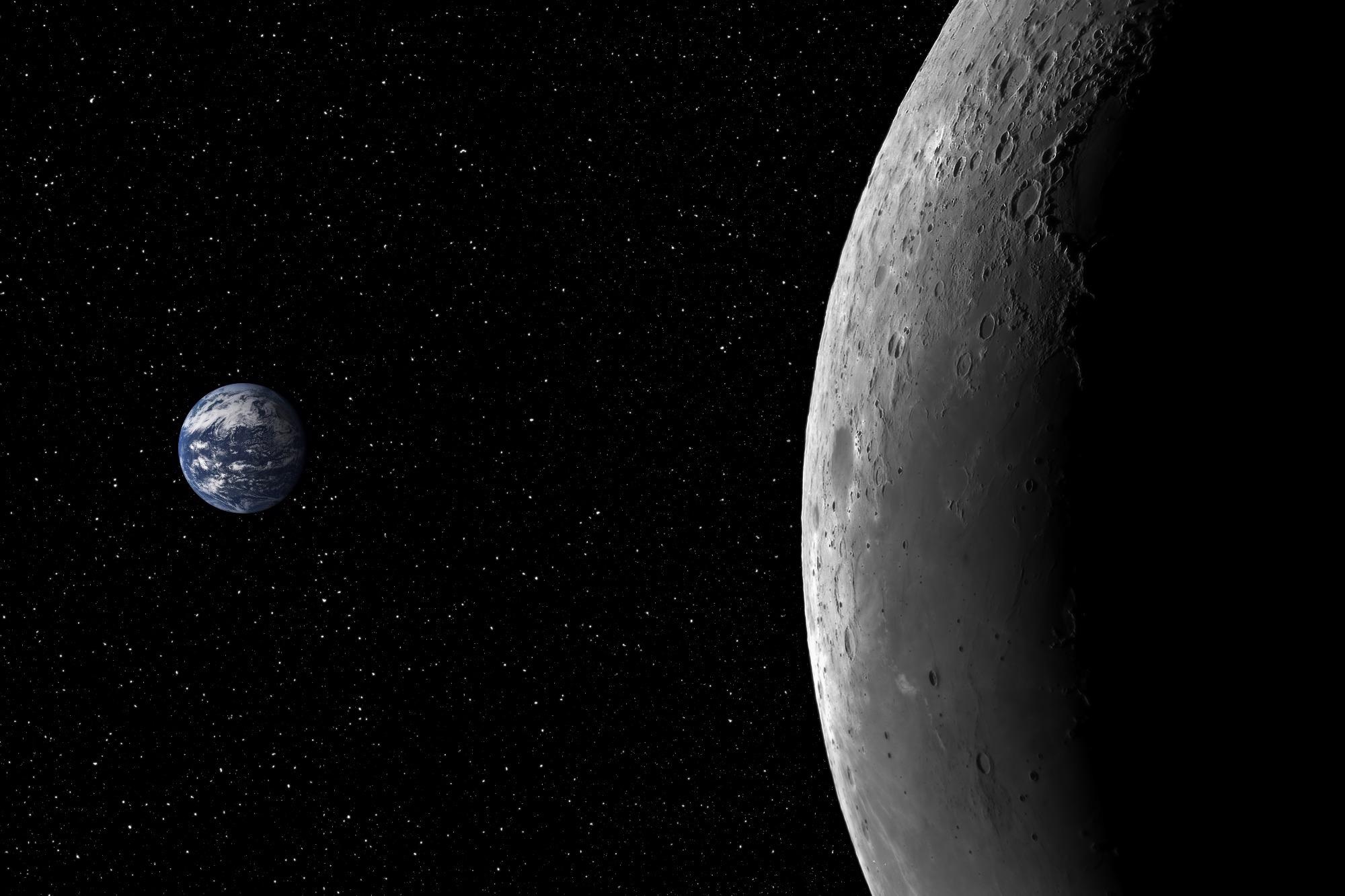
Image Credit: Shutterstock.com / Lukasz Pawel Szczepanski
Quantum sensors in orbit around the Moon will search Earth’s natural satellite for resources that could enable human-crewed space missions to Mars and beyond.
Australian start-up company Q-CTRL has announced that it will be providing quantum sensors to aid space exploration. The sensors will be sent into earth orbit, to the Moon, Mars, and possibly beyond, marking the first time quantum sensing and navigation systems have been used for space exploration1.
The step comes as part of Australia’s space industry consortium SEVEN SISTERS. Its name from the star cluster the Seven Sisters or the Pleiades, itself named after an important element of Greek Mythology and Aboriginal star dreaming stories. One of the consortium's first aims is to search the Moon for accessible water and further resources as part of NASA’s Artemis Program, meaning a lunar jaunt will be the initial mission for Q-CTRL’s quantum sensors.
To assist in this Q-CTRL — one of the world’s top ten quantum start-ups — will work in conjunction with Fleet Space Technologies, a nanosatellite start-up and founder of the aforementioned SEVEN SISTERS — consortium, which is comprised of several Australian academic institutes and commercial companies — which will load the sensors aboard their sophisticated satellites.
Our focus on quantum control engineering is enabling new applications in quantum sensing that were previously impossible. Quantum control is enabling small form factors, enhanced robustness, and the necessary autonomy to meet the strict requirements of uncrewed space applications. Quantum-control-defined sensors give us the ability to provide valuable new geospatial intelligence services — whether on Earth or on celestial bodies.
Michael Biercuk, CEO, Q-CTRL
The mission will commence in 2023, ahead of the next planned human-crewed mission to the Moon in 2024. The ultimate goal of these lunar missions is to establish a ‘stepping stone’ that will ultimately assist a human-crewed mission to the surface of Mars.
How Quantum Detectors Will Search the Moon
Sustainability is the watchword for future space missions, so making the leap to long space stays requires finding as many ‘in-situ’ resources as possible. The quantum sensors — including quantum-based gravity detectors and magnetic field sensors — will search for mineral deposits and liquid water from a nanosatellite located above the lunar surface.
Gravity-based sensors can detect tiny changes in a gravitational field of a planet or a moon that indicate a change in density. This, in turn, could indicate the presence of mineral deposits or even liquid water.
Whilst the most advanced standard gravimeters currently available work by the ‘bobbing’ of a tiny mass — usually a silicon chip — quantum variations use atomic interferometry to measure tiny variations in gravitational field strength.
This means, that at the heart of Q-CTRL’s system is a cloud of atoms trapped in a vacuum chamber¹. A laser is used to place the atoms in a superposition that can be described by a wavefunction. Whilst in this superposition an atom can simultaneously have two energy levels — one ‘low’ and one ‘high’.
The laser then ‘kicks’ the higher energy half of the wavefunction twice, once to move it away from its lower half, twice to move it back in close. This results in an overlapping wavefunction. Gravity influences this wavefunction in such a way that when this mixing occurs, the ratio of high to low energy states is altered. Measuring the ratio allows the strength of gravity to be recorded.
The reliance on the quantum phenomenon of particle/wave duality — the fact particles can also have a wave-like nature — results in a detector with immense precision.
NASA is already employing similar technology in the Gravity Recovery and Climate Experiment Follow On mission (GRACE-ON)3 to measure changes in Earth’s gravity that can indicate melting ice caps, droughts, and draining underground water supplies.
Magnetic field detectors operate using a different quantum principle, relying on a magnetic phenomenon found in electrons on the quantum scale, known as spin. This property affects the direction electrons will travel when exposed to a magnetic field. Therefore, by employing an electron detector its possible to precisely detect the presence of magnetic fields and their strength.
The Moon as a Stepping Stone
Q-CTRL says that their focus on engineering founded on quantum phenomena results in applications that weren’t possible just a few years ago. This means they can now better assist in the quest to send humans beyond the Moon, establishing our natural satellite as a stepping stone to Mars and possibly, further out into the solar system.
The applications of these quantum sensors figuratively expand beyond the exploration of space, ironically bringing them back ‘down to Earth.’ Biercuk predicts that the geospatial intelligence services the start-up is developing will ultimately find widespread use in defense and even climate change mitigation.
But, with the first step off-planet, Q-CTRL could give Australia the edge in a new, albeit more collaborative, space race. The country is aiming for a more competitive space program by 2030.
This groundbreaking application of autonomous quantum sensors in space exploration will be invaluable in leveraging extraterrestrial resources to establish permanent human bases on the Moon, Mars and beyond. It demonstrates Australia’s growing global leadership in both the quantum and space industries, establishing a solid foundation for future economic growth.
Steven Marshall, South Australia Premier
References
1. AUSTRALIAN SPACE CONSORTIUM TO LEVERAGE Q-CTRL’S QUANTUM-BASED TECHNOLOGIES, Q-CTRL, [2021], [https://q-ctrl.com/blog/australian-space-consortium-to-leverage-q-ctrls-quantum-based-technologies/]
2. Biedermann. G., [2008], Gravity tests, differential accelerometry and interleaved clocks with cold atom interferometers,’ Standford Edu, [https://web.stanford.edu/group/kasevich/cgi-bin/wordpress/wp-content/uploads/2012/09/Gb-thesis.pdf]
3. GRACE Mission Overview, [https://www.nasa.gov/mission_pages/Grace/overview/index.html]
Disclaimer: The views expressed here are those of the author expressed in their private capacity and do not necessarily represent the views of AZoM.com Limited T/A AZoNetwork the owner and operator of this website. This disclaimer forms part of the Terms and conditions of use of this website.